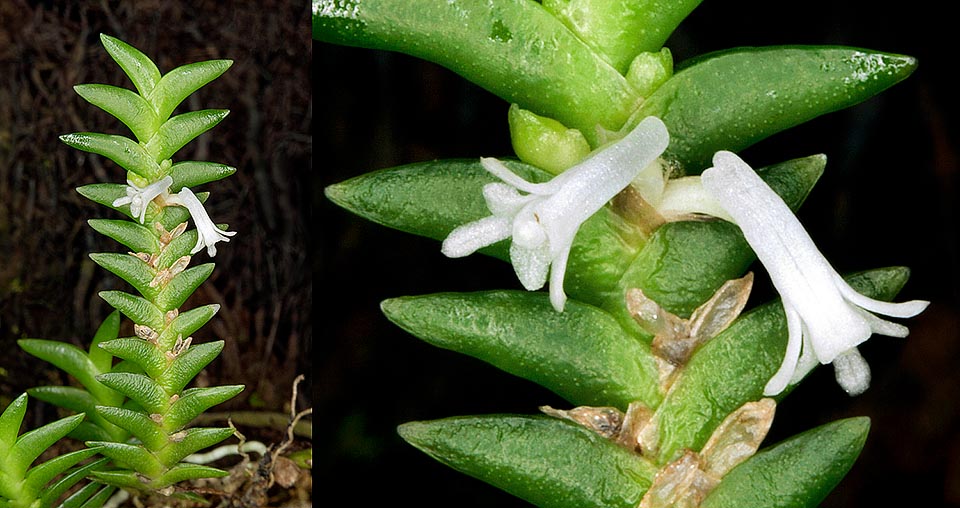Family : Orchidaceae

Text © Pietro Puccio

English translation by Mario Beltramini
The species is native to Peninsular Malaysia where it grows on the trees of the mountain forests at around 1200 m of altitude.
The name of the genus is the combination of the Greek adjective ““μικρός” (mikrós) = small and of the Latin substantive “saccus, i” = sac, with reference to the labellum; the specific name is the passive perfect participle of the Latin verb “trunco” = to cut off, to crop, with reference to the labellum.
The Microsaccus truncatus Carr (1932) is an epiphytic species with 10-13 cm long stems provided of alternate lanceolate leaves, distichous, imbricate and laterally flattened, 4-8 mm long and 2-2,5 mm broad at the base, coriaceous, of pale green colour. Short lateral inflorescences bearing two tiny white flowers with greenish yellow spot on the labellum, of about 3 mm of diameter. Oblong sepals, about 1,5 mm long and 1,7 mm broad, subfalcate oblong petals about 1,5 mm long and 1 mm broad, oblong labellum 4 mm long provided of a sort of cylindrical spur, 2 mm long and of 1 mm of diameter, and about 1 mm long column.

Microsaccus truncatus is a Peninsular Malaysia miniature orchid where lives on the mountain forests trees at 1200 m of altitude. Rare in cultivation, has stems of 10-13 cm alternate lanceolate leaves, distichous, imbricate and laterally flat, and short lateral inflorescences with two tiny flowers of about 3 mm of diameter © G. Mazza
It reproduces by seed, in vitro, and by division.
Species rare in cultivation, requires a semi-shady exposition, intermediate temperatures, high ambient humidity and constant ventilation. Regular waterings during the growth, more spaced during the vegetative stasis, utilizing rain water, demineralized or by reverse osmosis. It is usually mounted on trunks, pieces of bark or rafts of cork or of roots of arborescent ferns. Eventual transplants are to be done at the vegetative restart.
→ For general notions about ORCHIDACEAE please click here.
